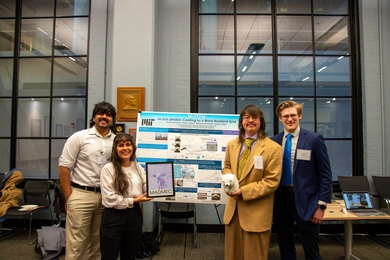Professors Gerald R. Fink, Mario J. Molina and Steven R. Tannenbaum are among the 55 new members elected to the Institute of Medicine, chosen for their "major contributions" to health and medicine or to related fields such as social and behavioral sciences, law, administration and economics.
Dr. Fink, a pioneer in the field of genetics, is professor of medical genetics in the Department of Biology and a founding member of the Whitehead Institute for Biomedical Research; he was named director of Whitehead in 1990. He is a graduate of Amherst College and received the PhD in genetics from Yale. By combining traditional genetics and modern molecular biology, Dr. Fink has made major strides in understanding cell growth and metabolism in yeast, plants and mammalian cells.
Dr. Tannenbaum is professor of toxicology and chemistry and was recently named head of the Division of Toxicology (see story below).
The 1995 winner of the Nobel prize in chemistry for his research on damage to the ozone layer by man-made chemicals, Dr. Molina is a professor of chemistry and is also the Lee and Geraldine Martin Professor of Environmental Studies in the Department of Earth, Atmospheric and Planetary Sciences. Work by him and others led to the banning of chlorofluorocarbons by the United Nations in 1987. Professor Molina holds the chemical engineering degree (1965) from the Universidad Na-cional Autonoma de Mexico, a postgraduate degree (1967) from the University of Freiburg in Germany, and the PhD (1972) from the University of California at Berkeley.
The 545-member IOM was chartered in 1970 as a component of the National Academy of Sciences to enlist distinguished professionals in the examination of policy matters pertaining to the health of the public. It acts under both the Academy's 1863 congressional charter responsibility to be an advisor to the federal government and its own initiative in identifying issues of medical care, research and education. Report topics in the past year included the physician workforce, primary health care, the scientific and public-policy feasibility of animal-to-human transplantation, Agent Orange and fetal alcohol syndrome.
A version of this article appeared in MIT Tech Talk on October 23, 1996.





